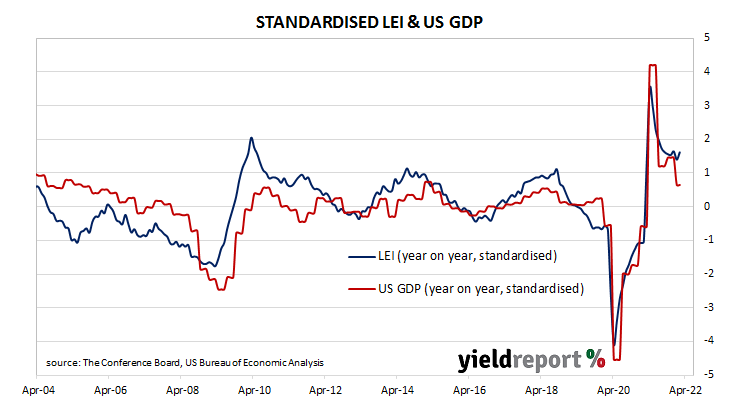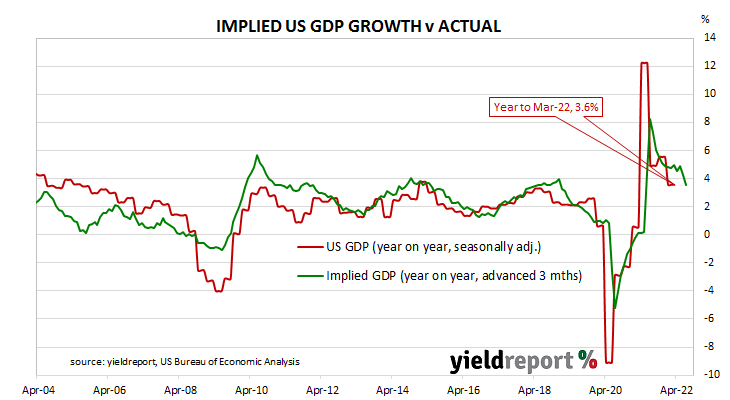Summary: Conference Board leading index down 0.3% in April; lower than expected; signals moderate growth outlook in near-term; forecast for US GDP growth over calendar 2022 cut from 3.0% to 2.3%.
The Conference Board Leading Economic Index (LEI) is a composite index composed of ten sub-indices which are thought to be sensitive to changes in the US economy. The Conference Board describes it as an index which attempts to signal growth peaks and troughs; turning points in the index have historically occurred prior to changes in aggregate economic activity. Readings from March and April of 2020 signalled “a deep US recession” while subsequent readings indicated the US economy would recover rapidly.
The latest reading of the LEI indicates it decreased by 0.3% in April. The result was lower than consensus expectations as well as March’s revised figure of 0.1%.
“The US LEI declined in April largely due to weak consumer expectations and a drop in residential building permits,” said Ataman Ozyildirim, Senior Director of Economic Research at The Conference Board. “Overall, the US LEI was essentially flat in recent months which is in line with a moderate growth outlook in the near-term.”
US Treasury bond yields fell on the day, especially at the front of the curve. By the close of business, the 2-year yield had shed 8bps to 2.58%, the 10-year yield had lost 4bps to 2.84% while the 30-year yield finished 1bp lower at 3.05%.
In terms of US Fed policy, expectations of a higher federal funds range over the next 12 months softened. June contracts implied an effective federal funds rate of 1.10%, 27bps higher than the current spot rate. June contracts implied a rate of 1.425% while May 2023 futures contracts implied an effective federal funds rate of 3.08%, 325bps above the spot rate. The Conference Board is expecting US GDP growth of 2.3% over calendar-year 2022, down from their forecast of 3.0% one month ago. Regression analysis suggests the latest reading implies a 3.5% year-on-year growth rate in July, down from June’s revised figure of 4.3%.



